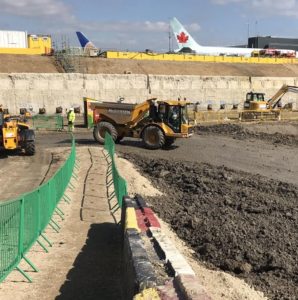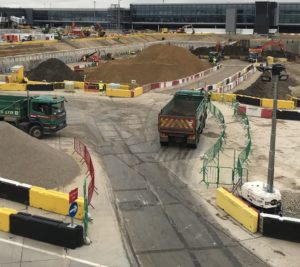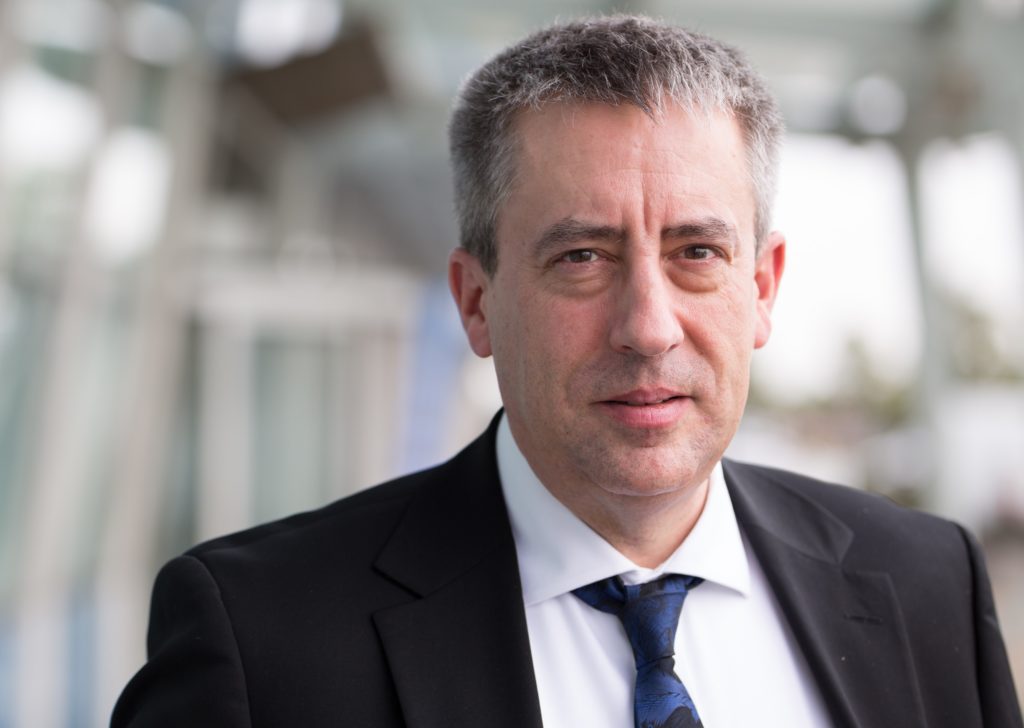Jonathan Smith, Future T2 program director, Heathrow Airport, reveals how the Lean process can lead to improvements in airport construction, ahead of his presentation on the subject at the forthcoming Passenger Terminal CONFERENCE.
Describe your presentation.
As part of the expansion program at Heathrow, a large, deep basement was to be created between the Terminal 2 main building and the satellite terminal. In doing so, the project team sought to drive and secure as many opportunities as they could to ensure success. The supplier worked alongside the Heathrow client to improve the excavation process. The process optimization project was delivered through a systematic implementation of ‘Lean’ principles, where the current process was fully understood, opportunities mapped and solutions developed. Through discrete scenario simulation and focusing on process flow and rhythm, potential savings of 19% time and 15% cost were demonstrated for the excavation process. The lessons from this project call us to break silos within the airport, to assess construction processes from a business perspective and reassess the flexibility of the operations stakeholders to better support necessary construction activities.
What are Lean principles?
1.Define Value
This is about the team understanding what is important to the customer and being able to look through their eyes. In the manufacturing industry, this tends to be very clear as value adding is related to any activity changing the physical state of a product. In construction it is a bit more complicated than that, as our products are huge and diverse. For an excavation process the value we were creating for our customers was simply volume – space for the Future T2 Baggage System.
2. Map the Value Stream
When looking at value, we inevitably also look at waste. In Lean we classify activities in three ways: value adding, non-value adding but necessary, and non-value adding (or waste). By collaboratively mapping all steps in the process and including real data from the construction site, we classify all three types of activities, pinpoint bottlenecks and identify the areas of opportunity to improve and set out on a continuous improvement path.
 3. Create Flow
3. Create Flow
Flow can be described as maintaining the transformational journey of a product without stop from the outset. Creating flow means designing or improving the way we do things so that the process does not stop. Think of a passenger at an airport going though transportation, check-in, security, boarding and collecting their baggage – a good flow means the process is smooth and continuous. In construction, creating flow has many dimensions. A process, like excavation, is about continuously creating more volume while efficiently transporting soil out of the airport. At project level it is about coupling all disciplines the right way so that none must stop and wait for another. Finally, at program level it is about coupling other programs, projects and operations to smoothly transition between phases.
4. Establish Pull
Pull is about pulling in people, information and resources in the right quantity, with the right capacity, in the right quality and at the right time. This can be seen clearly in construction, when collaboratively putting together a plan to deliver the project and setting up the structure to pull in the necessary expertise or discipline at the right time to avoid bottlenecks. For excavation, a pull system can be observed when an excavator only excavates when there is a truck in the correct spot to transport the spoil.
5. Pursue Perfection
A process is never 100% de-wasted and there are always opportunities for improvement. The important thing to do is to find those opportunities, evidence them and build the benefits realization.
How were they applied to save time and money on the excavation process?
We delivered a structured approach going through Lean training for the excavation team, process observation and data gathering, value stream mapping, collaborative workshops to identify opportunities for improvement and discrete event simulation for evaluating benefits. I will go into more detail in my conference presentation.
 What lessons were learned from this project?
What lessons were learned from this project?
Construction processes in complex environments may have simple solutions but challenging implementation of change due to siloed organizational structures and strong resistance to change. To add to this, it is really important to be able to gather data on the process we are delivering to make business-level informed decisions for change, innovation or simply to plan more adequately for the future.
How can future projects be improved using the lessons from this project?
Future projects can improve by allowing for Lean intervention earlier to allow enough time for change, especially in complex projects. Also, by establishing the right contractual agreements, both client and supplier can benefit from the savings. Lean works best when it is holistically implemented, and it looks beyond the program/project environment, reaching the whole value chain.
Heathrow Airport is now commencing a program to deliver additional operational capacity in Terminal 2, called the Future T2 program. For this program we expect to be Leaner by collaboratively understanding value, planning for avoiding waste, establishing an inclusive and productive collaborative environment and using visual management to improve safety and communication. The work site for the program will affect both airside and landside operations and is in a very congested location. Lean will support efficient delivery of this complex program and secure opportunities to de-risk the schedule and operational interfaces.
 Don’t miss Jonathan Smith’s presentation, ‘Lean process improvement in airport construction’, on the third day of the Passenger Terminal CONFERENCE’s Airport Design, Planning & Development stream. The full conference program can be found here.
Don’t miss Jonathan Smith’s presentation, ‘Lean process improvement in airport construction’, on the third day of the Passenger Terminal CONFERENCE’s Airport Design, Planning & Development stream. The full conference program can be found here.


